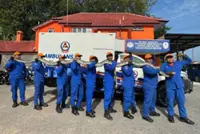HUMANS have not been very kind to our planet, and the oceans, in particular, bear the weight of never-ending pollution.
Each year, millions of tons of plastic and other waste products end up in the ocean.
Already a subscriber? Log in
Save 30% OFF The Star Digital Access
Cancel anytime. Ad-free. Unlimited access with perks.





